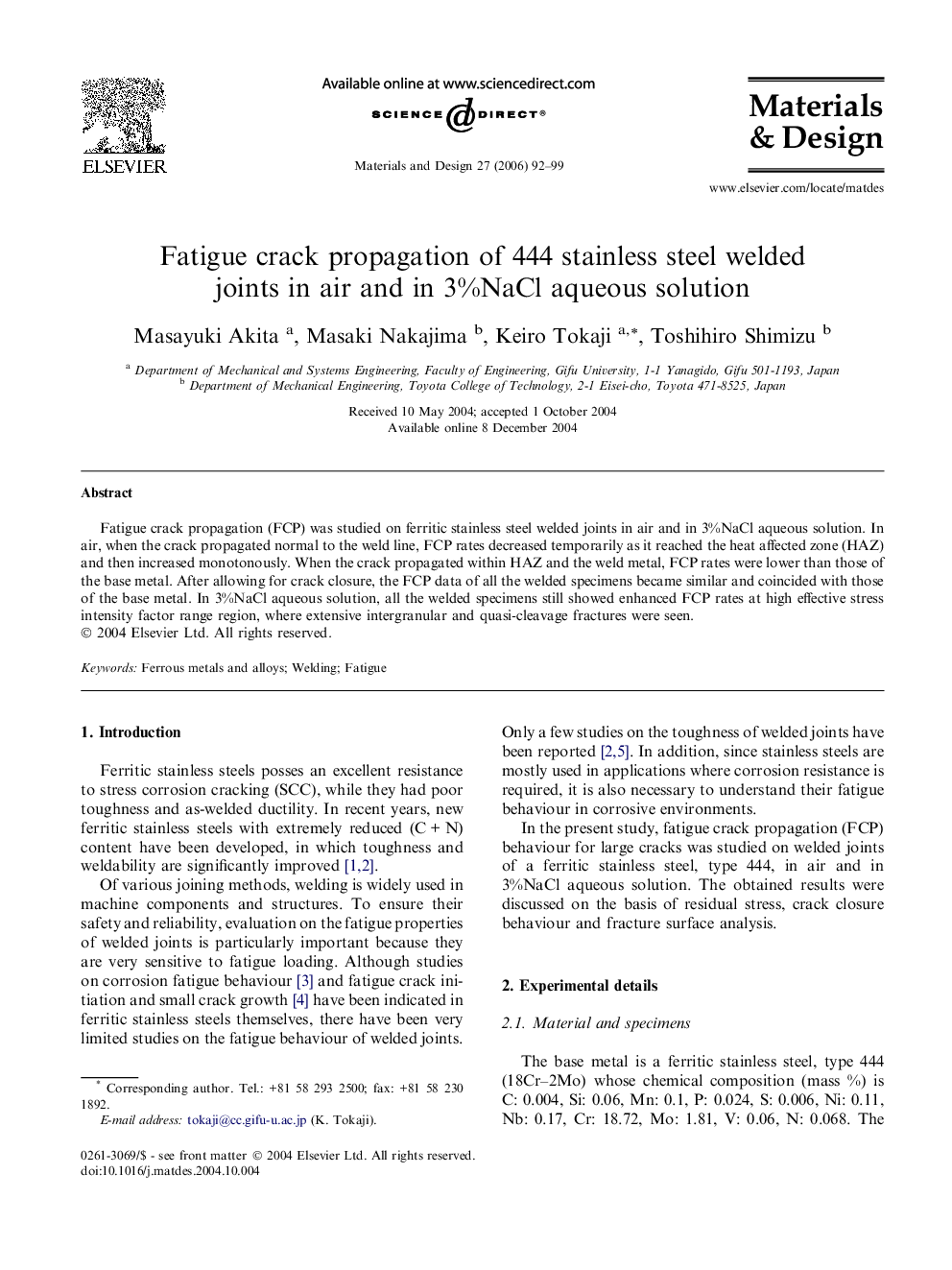| Article ID | Journal | Published Year | Pages | File Type |
|---|---|---|---|---|
| 833878 | Materials & Design (1980-2015) | 2006 | 8 Pages |
Abstract
Fatigue crack propagation (FCP) was studied on ferritic stainless steel welded joints in air and in 3%NaCl aqueous solution. In air, when the crack propagated normal to the weld line, FCP rates decreased temporarily as it reached the heat affected zone (HAZ) and then increased monotonously. When the crack propagated within HAZ and the weld metal, FCP rates were lower than those of the base metal. After allowing for crack closure, the FCP data of all the welded specimens became similar and coincided with those of the base metal. In 3%NaCl aqueous solution, all the welded specimens still showed enhanced FCP rates at high effective stress intensity factor range region, where extensive intergranular and quasi-cleavage fractures were seen.
Related Topics
Physical Sciences and Engineering
Engineering
Engineering (General)
Authors
Masayuki Akita, Masaki Nakajima, Keiro Tokaji, Toshihiro Shimizu,
